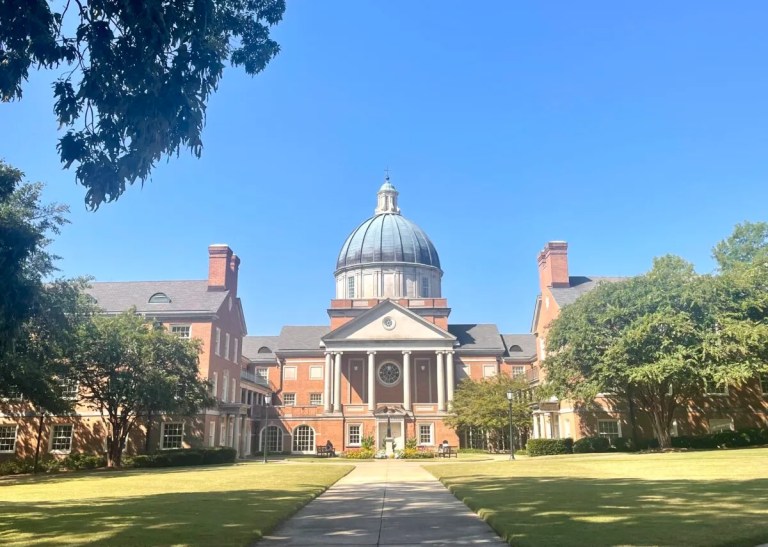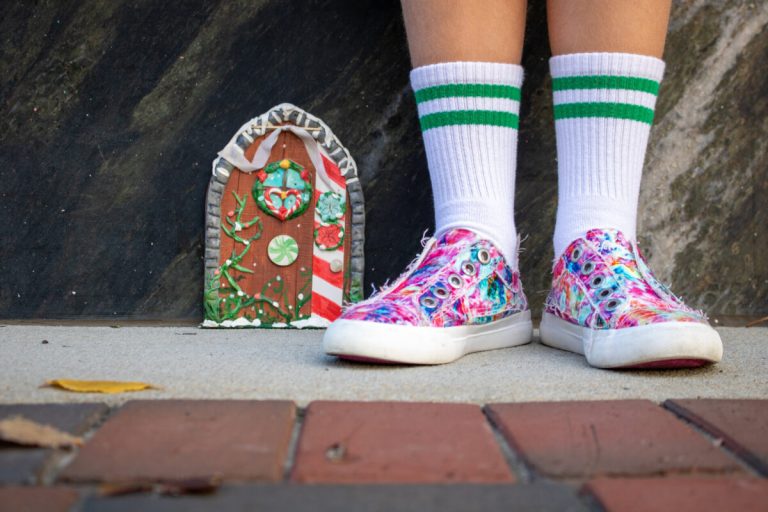These two Birmingham men designed $2 desk partitions. Could this make school return safer?
Reading time: 6 minutes

Dr. Karim Budhwani and Dr. Craig Wilson are putting their considerable talents to work designing something that might make returning to school this fall safer. Learn more about the simple desk partition that has the potential to make safe and healthy learning in schools—in Birmingham and elsewhere—much easier all around. Keep reading for all the details.
Who are these masked men?

Dr. Craig Wilson is the retired Director of UAB’s Sparkman Center for Global Health, with a bio that begins with training at Stanford and Harvard, followed by 30 years of international experience on a range of infectious diseases.
Put simply, he’s a local world-renowned pediatric infectious disease specialist who’s spent his life and career coming up with ways to tackle complex health problems in challenging environments.
Dr. Karim Budhwani is a scientist, engineer, and innovator who loves a challenge, whether it’s crushing cancer, developing eco-friendly software solutions or now, finding ways to help people do what they need to do in the midst of a global pandemic. Recently, Karim worked with his wife, Dr. Henna Budhwani, and Ben Podbielski to research the effect of population density on testing in our fight against COVID19.
“Essentially Craig—who is an old friend and, at least in my opinion, *the* expert in pediatric infectious disease —and I have teamed up to work with Birmingham area schools to help with their reopening strategies.
The idea for these desk partitions emerged from him and I brainstorming on additional measures to make schools safer. We have put together a few different design prototypes are now collecting feedback from administrative staff and teachers.”
Dr. Karim Budhwani
Desk partitions for $2 per student? Sign us up!

I reached out to Wilson and Budhwani about the project, and here’s what they said:
1. Tell me about the thinking behind these types of partitions.

Wilson + Budhwani: During our discussions, many issues came up involving situations that could benefit from desk partitions. Here are a few:
- Need to eat in the classroom and thus have masks off (if outdoor areas are not available).
- Physical distancing challenges and available space.
- Difficulty doing team and interactive learning.
- Possibility of having mask breaks (especially if outdoor areas are not available).
As you know, a dominant mode of SARS-CoV-2 (the novel coronavirus’ real name) transmission is respiratory droplets from someone shedding the virus to someone susceptible to infection.
Putting a physical barrier between the emitter and the receiver of droplets can blunt the transmission vector.
The idea here is that partitions would allow placing desks closer in groups while still having barrier protection—think about these as shut windows between desks. The clear partitions would allow for some interaction and also safer indoor mask free time. Meaning, kids can take masks of to eat and for indoor mask breaks.
These ideas among others emerged from interacting with school leadership, teachers and physically visiting the schools.
Note from two mamas at Bham Now: one of the really cool things about these partitions is that they allow for visual interaction. Even though kids will be wearing masks that cover their faces, they’ll at least get to see their friends who may sit at their table and still see their facial expressions.
2. What school(s) are you making them for?

Budhwani + Wilson: We are working with a few schools in the Birmingham area but our goal is to take the learnings from these discussions, develop designs and prototypes, and then share those with schools all across our state and even beyond Alabama.
Our focus is on simplicity and cost to make ideas and solutions as accessible as possible even in resource-poor settings.
It is our intent to share detailed, step-by-step guides on these as soon as possible.
We will also share ideas and findings from our continued participation in broader assessments including review of plans in context of individual schools, transitions of students, optimal use of facilities and grounds, and so on.
3. What’s the advantage of this over masks? Will masks still be required?

Wilson + Budhwani:
- Masks will always be a requirement and are a key to even considering re-opening schools.
- These barriers offer some variation in use of space and possible pedagogical variations as well.
- For a parallel, think about our national defense forces: Army, Navy, Air Force, and so on. Think of masking, spacing, disinfecting, handwashing, and “outdoorsing” as different branches of defense against SARS-CoV-2. Just because the Army is mobilized, doesn’t mean that we don’t need air cover. Each complements the other in improving our defense against this virus.
4. What else should I be asking?

Budhwani + Wilson: How about “Are you willing to help other schools?” The answer is a resounding yes!
One other thing, I love how Craig succinctly describes the impact of community spread in our school strategy: “What happens outside, will happen inside.”
Essentially, we need to recognize that we are *all* part of this equation. If we can adopt masking, spacing, disinfecting, handwashing, and “outdoorsing” as a community, we improve our defense against the virus – not only in terms of school reopening but broader economic reengagement and in the larger fight against this pandemic.



